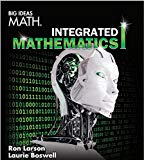
Concept explainers
(a)
To Find: The estimation and the interpretation of D(2) .
(a)
Answer to Problem 9CA
The distance travelled by the traveller is 500 units.
Given:
The given diagram is shown in Figure 1
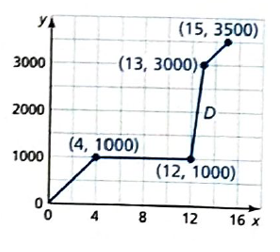
Figure 1
The function for the distance travelled by the traveller is y=D(x) .
Calculation:
Consider the function D(2) .
From the graph the function D(2) shows that the distance and the time have a liner relation at D(2) and at D(2) the distance travelled by the traveller is 500 units.
(b)
To Find: The solution to determine the solution of the equation D(x)=3500 and explain its relevance.
The solution is D(15)=3500 .
Consider the given function D(x)=3500 .
Consider the given function is y=D(x) .
Then at y=35000 the time is x=15 and the required solution is,
D(15)=3500
(c)
To Find: The time for which the traveller has to wait for the shuttle bus.
The wait time of the traveller is 15 min .
The graph shows that the time taken by the traveller to reach the shuttle is of x=15 minute.
(d)
To Find: The distance travelled by the traveller on the shuttle bus.
The distance travelled by the traveller on the shuttle bus is not determined from the graph.
From the graph the distance travelled by the rider on the shuttle bus is not determined as the graph shows the distance travelled by the traveller to reach the bus in feet.
(e)
To Find: The total distance that the traveller walks before and after riding the shuttle bus.
The total distance travelled is 5508 .
Consider the distance from the origin to the first point (4,1000) is,
d1=√(4−0)2+(1000−0)2=1000
Consider the distance from (4,1000) to the first point (12,1000) is,
d2=√(12−4)2+(1000−1000)2=8
Consider the distance from (12,1000) to the first point (13,3000) is,
d3=√(3000−1000)2+(13−12)2=2000
Consider the distance from (13,3000) to the first point (13,3500) is,
d3=√(15−12)2+(3500−1000)2=2500
Thus, the total distance travelled by the traveller is,
d=1000+8+2000+2500=5508
Explanation of Solution
Given:
The given diagram is shown in Figure 1

Figure 1
The function for the distance travelled by the traveller is y=D(x) .
Calculation:
Consider the function D(2) .
From the graph the function D(2) shows that the distance and the time have a liner relation at D(2) and at D(2) the distance travelled by the traveller is 500 units.
(b)
To Find: The solution to determine the solution of the equation D(x)=3500 and explain its relevance.
(b)
Answer to Problem 9CA
The solution is D(15)=3500 .
Consider the given function D(x)=3500 .
Consider the given function is y=D(x) .
Then at y=35000 the time is x=15 and the required solution is,
D(15)=3500
(c)
To Find: The time for which the traveller has to wait for the shuttle bus.
The wait time of the traveller is 15 min .
The graph shows that the time taken by the traveller to reach the shuttle is of x=15 minute.
(d)
To Find: The distance travelled by the traveller on the shuttle bus.
The distance travelled by the traveller on the shuttle bus is not determined from the graph.
From the graph the distance travelled by the rider on the shuttle bus is not determined as the graph shows the distance travelled by the traveller to reach the bus in feet.
(e)
To Find: The total distance that the traveller walks before and after riding the shuttle bus.
The total distance travelled is 5508 .
Consider the distance from the origin to the first point (4,1000) is,
d1=√(4−0)2+(1000−0)2=1000
Consider the distance from (4,1000) to the first point (12,1000) is,
d2=√(12−4)2+(1000−1000)2=8
Consider the distance from (12,1000) to the first point (13,3000) is,
d3=√(3000−1000)2+(13−12)2=2000
Consider the distance from (13,3000) to the first point (13,3500) is,
d3=√(15−12)2+(3500−1000)2=2500
Thus, the total distance travelled by the traveller is,
d=1000+8+2000+2500=5508
Explanation of Solution
Consider the given function D(x)=3500 .
Consider the given function is y=D(x) .
Then at y=35000 the time is x=15 and the required solution is,
D(15)=3500
(c)
To Find: The time for which the traveller has to wait for the shuttle bus.
(c)
Answer to Problem 9CA
The wait time of the traveller is 15 min .
The graph shows that the time taken by the traveller to reach the shuttle is of x=15 minute.
(d)
To Find: The distance travelled by the traveller on the shuttle bus.
The distance travelled by the traveller on the shuttle bus is not determined from the graph.
From the graph the distance travelled by the rider on the shuttle bus is not determined as the graph shows the distance travelled by the traveller to reach the bus in feet.
(e)
To Find: The total distance that the traveller walks before and after riding the shuttle bus.
The total distance travelled is 5508 .
Consider the distance from the origin to the first point (4,1000) is,
d1=√(4−0)2+(1000−0)2=1000
Consider the distance from (4,1000) to the first point (12,1000) is,
d2=√(12−4)2+(1000−1000)2=8
Consider the distance from (12,1000) to the first point (13,3000) is,
d3=√(3000−1000)2+(13−12)2=2000
Consider the distance from (13,3000) to the first point (13,3500) is,
d3=√(15−12)2+(3500−1000)2=2500
Thus, the total distance travelled by the traveller is,
d=1000+8+2000+2500=5508
Explanation of Solution
The graph shows that the time taken by the traveller to reach the shuttle is of x=15 minute.
(d)
To Find: The distance travelled by the traveller on the shuttle bus.
(d)
Answer to Problem 9CA
The distance travelled by the traveller on the shuttle bus is not determined from the graph.
From the graph the distance travelled by the rider on the shuttle bus is not determined as the graph shows the distance travelled by the traveller to reach the bus in feet.
(e)
To Find: The total distance that the traveller walks before and after riding the shuttle bus.
The total distance travelled is 5508 .
Consider the distance from the origin to the first point (4,1000) is,
d1=√(4−0)2+(1000−0)2=1000
Consider the distance from (4,1000) to the first point (12,1000) is,
d2=√(12−4)2+(1000−1000)2=8
Consider the distance from (12,1000) to the first point (13,3000) is,
d3=√(3000−1000)2+(13−12)2=2000
Consider the distance from (13,3000) to the first point (13,3500) is,
d3=√(15−12)2+(3500−1000)2=2500
Thus, the total distance travelled by the traveller is,
d=1000+8+2000+2500=5508
Explanation of Solution
From the graph the distance travelled by the rider on the shuttle bus is not determined as the graph shows the distance travelled by the traveller to reach the bus in feet.
(e)
To Find: The total distance that the traveller walks before and after riding the shuttle bus.
(e)
Answer to Problem 9CA
The total distance travelled is 5508 .
Consider the distance from the origin to the first point (4,1000) is,
d1=√(4−0)2+(1000−0)2=1000
Consider the distance from (4,1000) to the first point (12,1000) is,
d2=√(12−4)2+(1000−1000)2=8
Consider the distance from (12,1000) to the first point (13,3000) is,
d3=√(3000−1000)2+(13−12)2=2000
Consider the distance from (13,3000) to the first point (13,3500) is,
d3=√(15−12)2+(3500−1000)2=2500
Thus, the total distance travelled by the traveller is,
d=1000+8+2000+2500=5508
Explanation of Solution
Consider the distance from the origin to the first point (4,1000) is,
d1=√(4−0)2+(1000−0)2=1000
Consider the distance from (4,1000) to the first point (12,1000) is,
d2=√(12−4)2+(1000−1000)2=8
Consider the distance from (12,1000) to the first point (13,3000) is,
d3=√(3000−1000)2+(13−12)2=2000
Consider the distance from (13,3000) to the first point (13,3500) is,
d3=√(15−12)2+(3500−1000)2=2500
Thus, the total distance travelled by the traveller is,
d=1000+8+2000+2500=5508
Chapter 7 Solutions
BIG IDEAS MATH Integrated Math 1: Student Edition 2016
- (a) Test the hypothesis. Consider the hypothesis test Ho = : against H₁o < 02. Suppose that the sample sizes aren₁ = 7 and n₂ = 13 and that $² = 22.4 and $22 = 28.2. Use α = 0.05. Ho is not ✓ rejected. 9-9 IV (b) Find a 95% confidence interval on of 102. Round your answer to two decimal places (e.g. 98.76).arrow_forwardLet us suppose we have some article reported on a study of potential sources of injury to equine veterinarians conducted at a university veterinary hospital. Forces on the hand were measured for several common activities that veterinarians engage in when examining or treating horses. We will consider the forces on the hands for two tasks, lifting and using ultrasound. Assume that both sample sizes are 6, the sample mean force for lifting was 6.2 pounds with standard deviation 1.5 pounds, and the sample mean force for using ultrasound was 6.4 pounds with standard deviation 0.3 pounds. Assume that the standard deviations are known. Suppose that you wanted to detect a true difference in mean force of 0.25 pounds on the hands for these two activities. Under the null hypothesis, 40 = 0. What level of type II error would you recommend here? Round your answer to four decimal places (e.g. 98.7654). Use a = 0.05. β = i What sample size would be required? Assume the sample sizes are to be equal.…arrow_forward= Consider the hypothesis test Ho: μ₁ = μ₂ against H₁ μ₁ μ2. Suppose that sample sizes are n₁ = 15 and n₂ = 15, that x1 = 4.7 and X2 = 7.8 and that s² = 4 and s² = 6.26. Assume that o and that the data are drawn from normal distributions. Use απ 0.05. (a) Test the hypothesis and find the P-value. (b) What is the power of the test in part (a) for a true difference in means of 3? (c) Assuming equal sample sizes, what sample size should be used to obtain ẞ = 0.05 if the true difference in means is - 2? Assume that α = 0.05. (a) The null hypothesis is 98.7654). rejected. The P-value is 0.0008 (b) The power is 0.94 . Round your answer to four decimal places (e.g. Round your answer to two decimal places (e.g. 98.76). (c) n₁ = n2 = 1 . Round your answer to the nearest integer.arrow_forward
- Consider the hypothesis test Ho: = 622 against H₁: 6 > 62. Suppose that the sample sizes are n₁ = 20 and n₂ = 8, and that = 4.5; s=2.3. Use a = 0.01. (a) Test the hypothesis. Round your answers to two decimal places (e.g. 98.76). The test statistic is fo = i The critical value is f = Conclusion: i the null hypothesis at a = 0.01. (b) Construct the confidence interval on 02/022 which can be used to test the hypothesis: (Round your answer to two decimal places (e.g. 98.76).) iarrow_forwardConjecture Let x and y be integers. If x is even and y is odd, then xy is even. Try some examples. Does the conjecture seem to be true or false?arrow_forwardFind the general solution to the differential equationarrow_forward
- 3. A room has a large circular table with ten seats, numbered 1 to 10, such that to the right of seat number i is seat number i + 1 for all i ∈ {1, . . . , 9} and to the right of seat 10 is seat 1. We want to assign seats to 10 people, 6 of them only speak Slovene, 1 of them only speaks English, and the remaining 3 speak both Slovene and English, by giving out numbered place cards. In how many ways can we do that so that everyone sits next to at least one person who speaks a common language?arrow_forwardcharity savings Budget for May travel food Peter earned $700 during May. The graph shows how the money was used. What fraction was clothes? O Search Submit clothes leisurearrow_forwardExercise 11.3 A slope field is given for the equation y' = 4y+4. (a) Sketch the particular solution that corresponds to y(0) = −2 (b) Find the constant solution (c) For what initial conditions y(0) is the solution increasing? (d) For what initial conditions y(0) is the solution decreasing? (e) Verify these results using only the differential equation y' = 4y+4.arrow_forward
- SOLVE ONLY FOR (L) (M) AND (O)arrow_forwardAphids are discovered in a pear orchard. The Department of Agriculture has determined that the population of aphids t hours after the orchard has been sprayed is approximated by N(t)=1800−3tln(0.17t)+t where 0<t≤1000. Step 1 of 2: Find N(63). Round to the nearest whole number.arrow_forward1. A telegraph can transmit two different signals: a dot and a dash. We want to encode the 26 letters of the English alphabet and the ten digits 0, 1, 2, . . . , 9 using sequences of these two symbols. What is the smallest integer n such that we can encode all these letters and digits with sequences of length at most n and length at least 1?arrow_forward
 Discrete Mathematics and Its Applications ( 8th I...MathISBN:9781259676512Author:Kenneth H RosenPublisher:McGraw-Hill Education
Discrete Mathematics and Its Applications ( 8th I...MathISBN:9781259676512Author:Kenneth H RosenPublisher:McGraw-Hill Education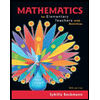 Mathematics for Elementary Teachers with Activiti...MathISBN:9780134392790Author:Beckmann, SybillaPublisher:PEARSON
Mathematics for Elementary Teachers with Activiti...MathISBN:9780134392790Author:Beckmann, SybillaPublisher:PEARSON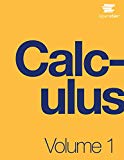
 Thinking Mathematically (7th Edition)MathISBN:9780134683713Author:Robert F. BlitzerPublisher:PEARSON
Thinking Mathematically (7th Edition)MathISBN:9780134683713Author:Robert F. BlitzerPublisher:PEARSON Discrete Mathematics With ApplicationsMathISBN:9781337694193Author:EPP, Susanna S.Publisher:Cengage Learning,
Discrete Mathematics With ApplicationsMathISBN:9781337694193Author:EPP, Susanna S.Publisher:Cengage Learning,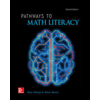 Pathways To Math Literacy (looseleaf)MathISBN:9781259985607Author:David Sobecki Professor, Brian A. MercerPublisher:McGraw-Hill Education
Pathways To Math Literacy (looseleaf)MathISBN:9781259985607Author:David Sobecki Professor, Brian A. MercerPublisher:McGraw-Hill Education





